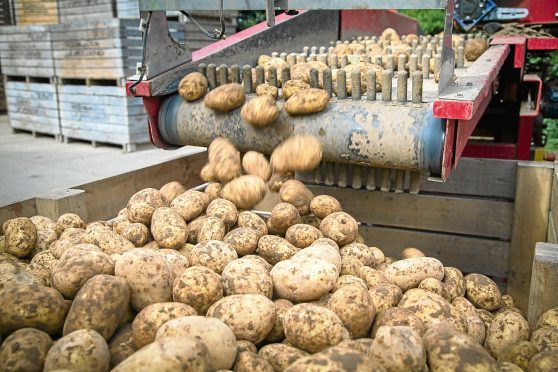Potato industry leaders have united to take action against the threat of potato cyst nematode (PCN).
An industry-led group has formed as part of a Soil Association Scotland-led rural innovation support service project by SAC Consulting.
Jon Pickup from Science and Advice for Scottish Agriculture (SASA) told the first meeting of the group that PCN could wipe out Scotland’s potato industry by 2025 if left unchecked.
He said the pallida species of PCN was of particular concern, especially in Angus.
“We’re seeing an exponential increase in our findings of pallida in Angus alone,” said Mr Pickup.
“At the moment we’re finding PCN in about 500 hectares per annum, but the exponential spread means that by 2025 this could be at 1,400-1,500 hectares.”
He said estimates suggest the growing infestation of PCN in Scotland could result in industry losses of up to £6 million by 2025.
Growing PCN-resistant varieties was discussed at the meeting, but Kim Davie from SASA said the options were limited.
She said: “Most pallida- resistant varieties are processing varieties, but in Scotland our ware market is for table varieties.
“There are only a few pallida resistant varieties currently suitable for use as table varieties and the question is how do we get supermarkets to take these resistant varieties.”
SRUC’s Dr Andy Evans encouraged more sampling.
He said: “If you’ve got high egg counts, you really do need to think about a long rotation of 10 to 13 years, grow resistant cultivars and consider biofumigation or trap cropping. If you’ve had a low PCN count and grown a resistant variety, it’s still worth resampling after the potato harvest to see where you are.”
